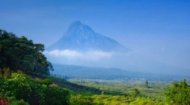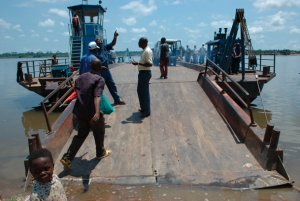|
Congo Ferry |
Congo Ferry |
Congo Ferry | Congo Ferry |
Explore all about the Democratic Republic of Congo in a series of pictures, videos and images.
More >
|
|
Kinshasa to Brazzaville Congo FerryFerries operate every two hours between the two countries from 8am until mid-afternoon and cost around 9UK for the twenty-minute crossing but travellers are recommended to take the more expensive Carnot Rapide VIP Ferry, which, although costing more at 21UK, is a modern boat with fewer passengers, making for a safer crossing. And safety is something of an issue for the Congo ferry. In July 2010, eighty people died after their ferry hit a rock. In 2009 ninety people died after their supposedly non-passenger logging boat sank. In one of the worst disasters in 1993, 147 citizens of the Democratic Republic of Congo drowned after the ferry leaving the Republic of Congo left the quayside prematurely, pushing passengers into the water, and then, when the ferry made a hasty return after realising what had happened, it crushed many of those in the water. In 2021, in one of the most recent accidents, 60 drowned, and hundreds have died over the intervening years, not least because many in Africa simply have never learned how to swim. The journey from one capital to the other is more than just a boat ride; it's a multi-stage process involving border formalities, local interactions, and a healthy dose of patience. 1. Pre-Departure Essentials: Visas are Paramount before even considering the journey as both Congolese nations have strict visa requirements. It is crucial to obtain the necessary visa(s) before arriving at the border. Attempting to cross without a pre-arranged visa will almost certainly result in refusal of entry. Additionally, an International Certificate of Vaccination (Yellow Fever card) is mandatory for entry into both DRC and Congo-Brazzaville, and will be checked at immigration. 2. Departure Points: 3. Navigating the Port and Immigration: Upon arrival at either port, travellers are immediately immersed in a vibrant, sometimes overwhelming, environment. Porters will offer to carry luggage, and various individuals may offer "assistance" with the immigration process. While some official facilitators exist, exercise caution and ensure you only deal with authorised personnel. The general immigration process involves:
4. The Ferry Ride: Once immigration formalities are complete, you'll proceed to the boarding area. Two main types of vessels typically operate:
The ride itself offers unique views of the two capital cities, with their contrasting skylines and the vibrant river life. You'll see fishing boats, cargo barges, and other river traffic. 5. Arrival and Re-entry: Upon arrival at the destination port, the process largely reverses. You will proceed through immigration and customs on the new side, presenting your passport, visa, and Yellow Fever card again. Expect similar levels of scrutiny and potential delays. Once cleared, you can then exit the port and find local transport into the city. Practical Tips for a Smooth Crossing
You could, of course, also hire one of the speed boats available, but then you really would be taking your life into your own hands as operators seemingly haven't heard of safety and just want to get you across the Congo in the fastest way possible, even if that means bouncing off rocks along the rapids! If making the journey, ensure you have a valid passport and visa, as, whilst arriving in the Republic of Congo is relatively hassle-free, the same cannot be said for arrivals at Kinshasa, especially for lone travellers outside government and NGO operations, where 'additional funds' are normally required to 'facilitate' the entry process! The video (left) gives insights into the ferry trade across and along the Congo River. It's probably the best way to experience the journey as doing it for real may not be covered by your travel insurance! |








